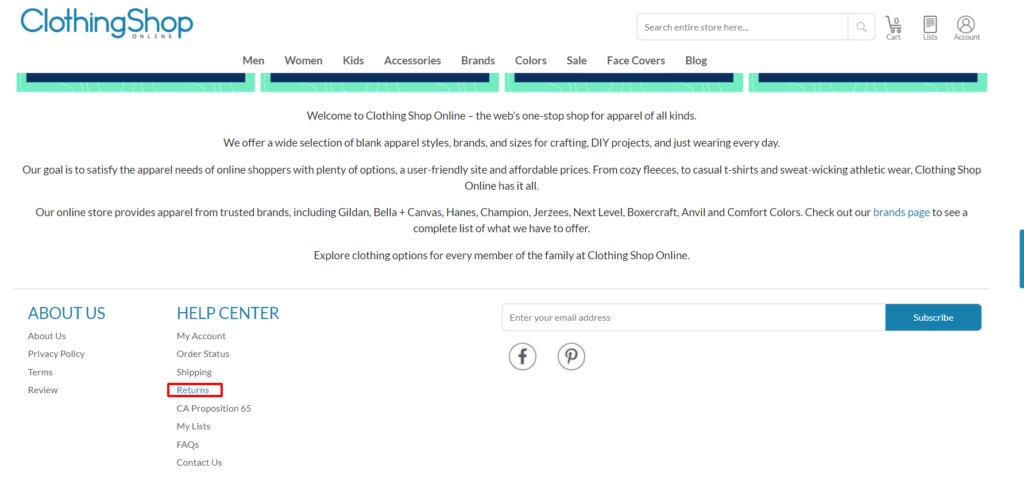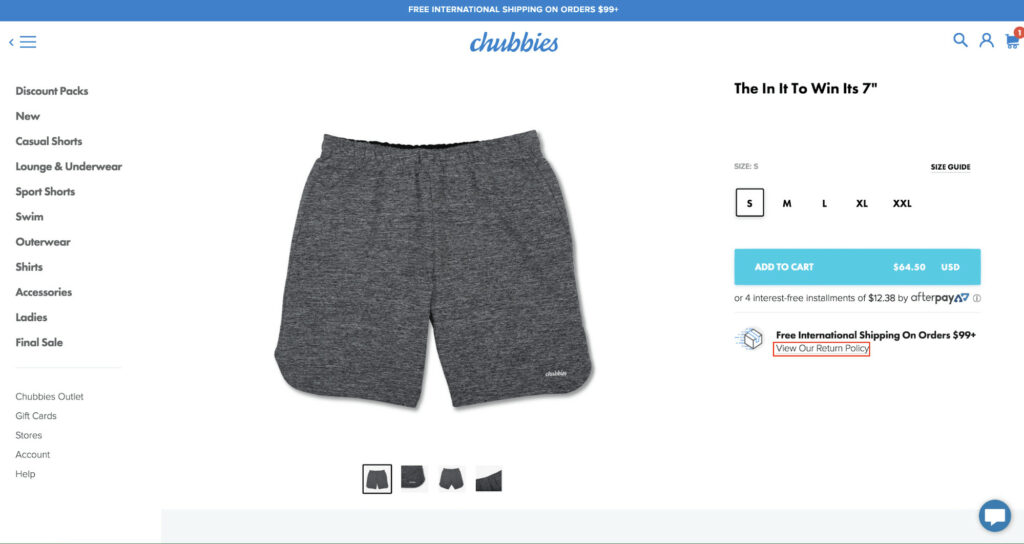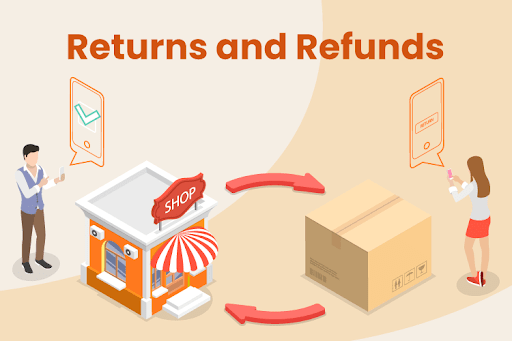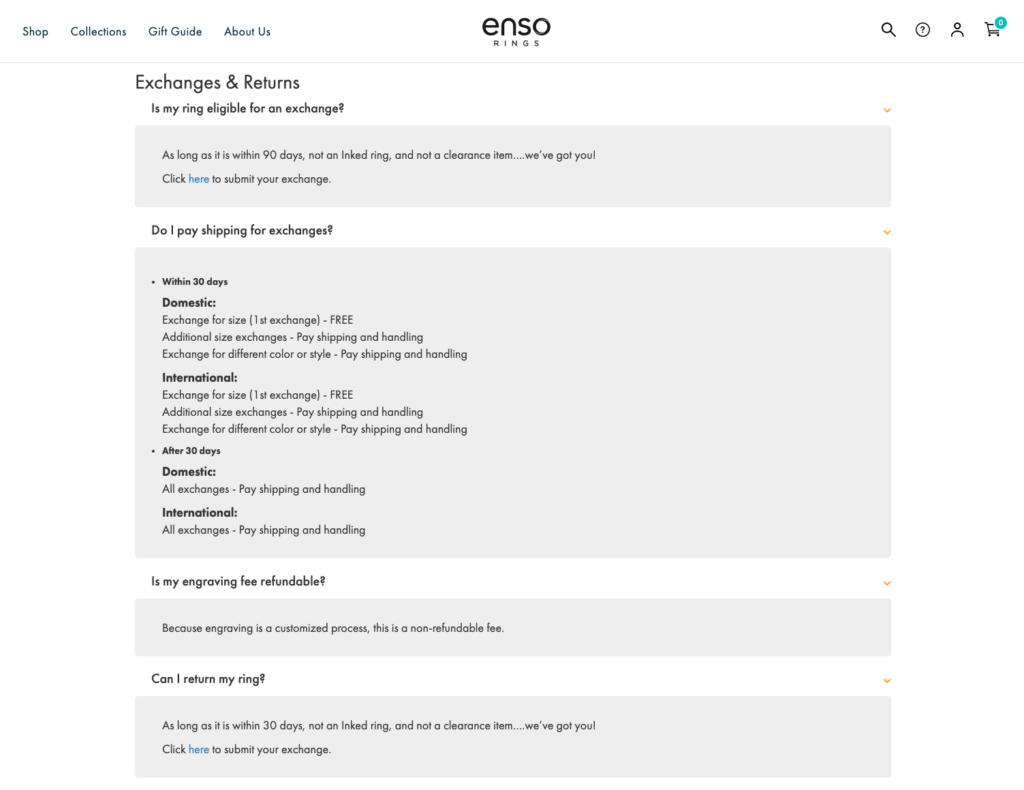Ecommerce Return Policy: What is It, Benefits & How to Write
Did you know that up to 50% of online shoppers check an eCommerce store’s return policy before making a purchase? Even more real, 80% of customers who are satisfied with a store’s return process are likely to buy again. These numbers show us a truth: a customer-friendly return policy directly influences conversion rates, customer satisfaction, and long-term loyalty.
In this blog, we’ll guide you on factors that make up an effective eCommerce return policy.
Claue – Clean and Minimal Magento Theme
We provide an amazing Magento theme with fast and responsive designs. Let’s find out!
What is a Return Policy?
A return policy is a clear set of rules that explains how customers can return, exchange, or request a refund for items they no longer want or need. Return policy outlines which products can be returned, why they can be returned, and within what time frame. Some retailers also include specifics on whether customers receive cash refunds, store credit, or exchanges, and who covers the return shipping.

How Does an eCommerce Return Policy Affect Your Sales and Customer Loyalty?
To understand the importance of a return policy, ArrowTheme will analyze the viewpoint of new customers and customers who purchased your items but want to return them.
How does the eCommerce Return Policy Affect New Customers?
Shopping online can feel like a gamble, especially for new customers. They can’t touch, see the colors in person, or test the product before they buy. That’s why eCommerce return policies matter so much.
When someone’s visiting your site for the first time, they may have questions: “What if this doesn’t work out? Can I send it back?” If your return policy is easy to find, clear, and fair, it gives them peace of mind, and that peace of mind turns into confidence to buy.
Put the return policy out there, keep it simple, and speak in a friendly, human tone. It doesn’t have to be long, just honest and straightforward. Because at the end of the day, people don’t just buy products, they buy trust. And a good return policy can build it.

How Does the eCommerce Return Policy Impact Customers Who Want to Make a Return?
Now, let’s look at your eCommerce return policy from another important angle: customers who’ve already bought something but need to return it.
For these customers, the return process becomes an important part of their overall shopping experience. If the process is slow, confusing, or filled with hidden conditions, it damages their trust in your brand. Many of them won’t come back for another purchase. You could be a lost lifetime customer.
Unhappy customers often share their experiences. They can write a long negative review, post on social media, or have a casual conversation with friends and family. Unfortunately, you might be losing future customers without even knowing it.

When you offer easy returns, respond quickly, and treat customers fairly, you increase the chances they’ll give you another shot. According to a Narvar study, 96% of customers say they’d shop with a retailer again if the return process was easy. That’s a powerful reason to treat every return like a chance to win someone back.
How To Build an Effective eCommerce Return Policy?
As we’ve seen, a clear and customer-friendly return policy can increase sales and boost loyalty. So, how do you create an eCommerce return policy that works for both you and your customers? Here are some essential tips:
1. Make eCommerce Return Policy Visible to Customers
Your return policy must be clearly visible at multiple touchpoints. It is not hidden deep inside terms and conditions or buried in your website’s footer.
Many eCommerce sites still make this mistake: the policy is technically there, but hard to find. When shoppers can’t find answers quickly, they get frustrated and leave. To avoid that, place links to your return policy in key places like:
- The homepage (typically in the footer, but make the label clear: “Returns & Exchanges” or “Easy Returns”)
- Product pages (just below the “Add to Cart” button is a great spot)
- The checkout page (offer a reminder about your return window before they complete the order)
- Order confirmation emails (this reassures buyers and sets expectations)
eCommerce Return Policy on the Home Page
Your homepage is the first place new visitors land, so make it easy for them to locate your return policy. It’s common to place it in the footer, don’t just label it “Terms.” Use something more specific, like:
- “Easy Returns”
- “30-Day Return Guarantee”
- “Hassle-Free Returns Policy”
You can highlight them in banners, icons, or trust badges near the top of your homepage to build confidence from the first click.

On the Product Pages
Displaying your return policy on product pages for the purpose of accessing important information without leaving the buying journey. A brief note like “View Our Return Policy” near the “Add to Cart” button can reassure buyers.
You don’t need a full paragraph. Showing a clear, clickable link or a short icon-based message is enough to make a difference.

During the Checkout Process
Having a link to your store’s return policy during checkout will encourage customers to complete the transaction. Include your return policy throughout the last stage of the buying process to prevent cart abandonment. Also, it reaffirms your brand’s credibility.
In the Confirmation Emails
Don’t forget to include a link to your return policy in the order confirmation email. It is a friendly final reminder that you stand behind your products and that you’re ready to support the customer if anything goes wrong.
This small touch tells your customers: “We care about your satisfaction.” If a refund request ever comes up, referencing the return policy in your response can help explain your process.

2. Never Copy and Paste
Every online store is different. Your products, customers, shipping methods, and brand tone all have their character. So, copying a return policy from another website might do more harm than good.
Let’s take the time to write a return policy tailored to your business. Mismatch between your actual practices and what’s written can quickly lead to lost trust, disputes, and negative reviews.

3. Use Simple, Friendly Language in Your Return Policy
Your return policy’s main job is to communicate clearly with customers, so it’s important to write it in plain, easy-to-understand language. Avoid legal jargon or complicated terms that might confuse people. Let’s aim for clarity and friendliness. Use short sentences, everyday words, and a tone that sounds human.
For example, instead of saying:
“Customers must initiate a return request within 14 business days from the date of product receipt.”
You could say:
“You can return any item within 14 days of receiving your order. All you need to do is just let us know, and we’ll help you out.”
A 2023 study by the Nielsen Norman Group found that people understand and trust brands more when content is written at an 8th-grade reading level or below. The simpler in this case is better.

4. Offer Free Return Shipping
At first, offering free return shipping might sound like a loss for your business. But it’s a smart long-term investment.
Suppose the average cost of return shipping is around $10. Now, compare that to your customer acquisition cost (CAC). CAC can easily reach $100 or more, depending on your industry. So, keeping an existing customer happy by offering free returns is far more cost-effective than finding a brand-new one.

5. Clarify Conditions for Return Policy
Clear communication facilitates that your customers don’t have to guess what’s allowed and what’s not. You need to explain all return conditions in a simple, detailed, and transparent way.
A well-structured return policy typically includes the following key elements:
- Return timeframe
- Return Conditions
- Fees and Other Options
Return Timeframe
The return timeframe is the period during which a customer is allowed to request a return or refund. It can vary depending on your product category or seasonal factors (like extended return windows during holidays).
For example: “You can request a return within 15 days of receiving your order.”
It’s also important to include how long it will take to process the refund once the return is approved. Customers appreciate knowing when to expect their money back.
Example: “Once we receive and inspect the returned item, your refund will be processed within 7 business days.”

Return Conditions
It’s just as important to explain the conditions under which returns are accepted. Customers easily know what qualifies for a return. Your team can also avoid confusion or disputes later on.
Your return policy should cover things like:
- When the product was purchased
- The condition of the item (e.g., unused, unopened, with tags)
- Valid reasons for return
- How the item must be packaged or returned (e.g., with original packaging)
For example, you might state that only items with defects or damage from shipping can be returned. Returns for personal reasons (like “I changed my mind”) aren’t accepted.
Moreover, make it clear who’s responsible in different scenarios. If the product arrives damaged or incorrect, you may cover the return shipping. If the customer simply doesn’t want the product anymore, they might be responsible.

Fees and Other Return Options
Lastly, a return policy should explain how customers can return it and what options they have. Important is to be upfront about any fees that might apply.
Start by asking yourself a few key questions:
- Can customers choose between a refund, store credit, or product exchange?
- Are there any restocking fees, shipping charges, or handling costs?
- Will international orders involve extra return shipping fees or customs charges?
- Are there any deductions for items that are used, opened, or missing packaging?
For example:
“You may exchange items or request store credit for future purchases. A $5 restocking fee applies to all returns unless the item arrived damaged or incorrect.”
“Return shipping for international orders is the customer’s responsibility.”
Be sure to explain why any fees are necessary, and do it in a fair, honest way.
6. Create an FAQ Page About Your eCommerce Return Policy
An FAQ (Frequently Asked Questions) page gives customers quick answers to the most common questions. It saves time for both your customers and your support team.
For example, your Return Policy FAQ page can answer questions like:
- “How long do I have to return an item?”
- “What items are not eligible for return?”
- “Do I have to pay for return shipping?”
- “How long will it take to get my refund?”
Since FAQ pages are typically shorter and easier to skim than a full policy, customers can quickly understand your return process and make confident decisions.

7. Visualize Your Return Process
People process visuals much faster than text. That’s why adding visuals to your return policy can make a big difference.
Instead of explaining every step in long paragraphs, try creating a simple return flowchart, timeline, or set of icons that walk customers through the process. For example:
Step 1: Submit a return request
Step 2: Receive confirmation and shipping label
Step 3: Pack and ship the item
Step 4: Get your refund or exchange
When customers can quickly see how simple your return process is, they’ll feel more confident about shopping. It reduces hesitation at checkout and helps continue the customer relationship.

Conclusions
To sum up, you can increase sales and convert dissatisfied consumers into loyal customers by changing your eCommerce return policy to be more customer-centric.
Arrowtheme wishes you a successful business. If you find some technical problems during running an online business, feel free to contact us.
Contact US – ArrowTheme:
– Email: [email protected]
– Facebook: Facebook.com/ArrowThemeTeam
– Website: ArrowTheme.com
Read more: Shopify Bundle App: Top 10 Apps to Raise Store’s Revenues



